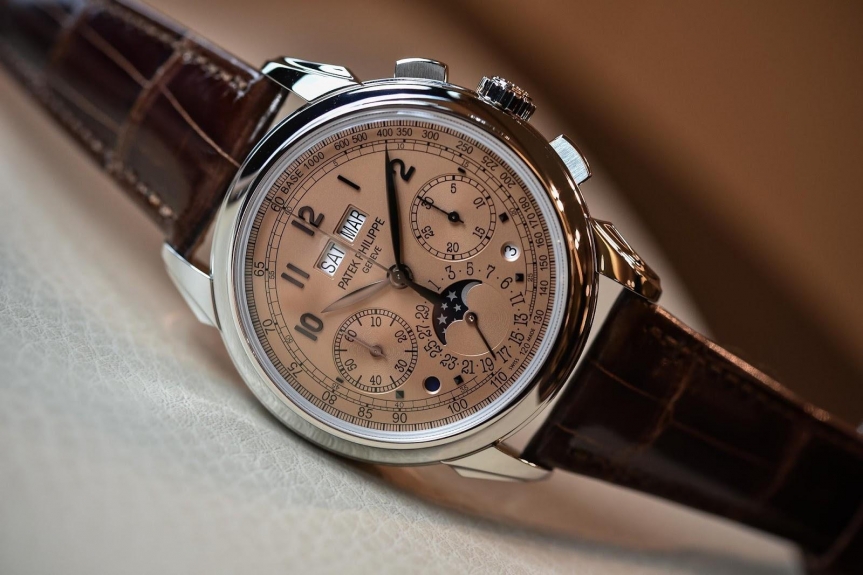When it comes to the world of haute horlogerie, few names resonate as deeply as Patek Philippe. Revered by collectors, coveted by celebrities, and passed down through generations, the Swiss brand represents the pinnacle of watchmaking. Among its most prestigious offerings is the Grand Complications collection—timepieces that not only measure time but master it. But why do these watches come with such astonishing price tags, often reaching into the hundreds of thousands or even millions of dollars? Let's break down the key reasons behind the astronomical price of the Patek Philippe Grand Complications.
1. Unmatched Craftsmanship
Each Grand Complications watch is a product of meticulous handcraftsmanship. The process involves hundreds to thousands of hours, with master watchmakers painstakingly assembling and adjusting each component by hand. These are not just watches—they are miniature mechanical masterpieces. From hand-finished bridges and plates to polished screws and beveled edges, every detail reflects horological artistry.
Unlike mass-produced timepieces, no shortcuts are taken. Each watch may take up to several years from concept to completion, especially for models featuring rare or custom complications. This level of dedication naturally drives up both the time investment and the cost. Also You can Buy Patek Philippe Watches In Dubai & UAE From valid shops like: platinum times, dubai-watches uae, GMTwatches or eBay.

2. Complex Mechanical Movements
As the name implies, "Grand Complications" means these watches go far beyond simple time-telling. Patek Philippe has pushed the boundaries of mechanical complexity, incorporating multiple complications into a single case. These include:
- Perpetual calendar: Automatically adjusts for leap years.
- Minute repeater: Chimes the time on demand using tiny hammers and gongs.
- Split-seconds chronograph: Measures multiple elapsed times simultaneously.
- Celestial charts: Accurately track the night sky as seen from Geneva.
Designing and assembling such mechanisms—often with 600 to over 1,500 individual parts—requires engineering on an almost unfathomable scale. The precision needed to ensure every gear, spring, and lever interacts flawlessly is a triumph of micro-mechanical innovation. Such feats justify the extraordinary cost.
3. Limited Production and Exclusivity
Patek Philippe maintains its legendary reputation by keeping its production intentionally low. Estimates suggest the brand produces fewer than 70,000 watches annually—and Grand Complications represent only a tiny fraction of that number.
This limited supply ensures exclusivity. Owning one of these timepieces is not just about the watch itself; it's about belonging to an elite group of connoisseurs. Patek Philippe doesn't just sell watches—it curates legacy pieces. In many cases, potential buyers must be vetted and approved by the brand before even being allowed to purchase a Grand Complications model.

4. Exquisite Materials
Beyond engineering, Patek Philippe uses only the finest materials for its Grand Complications watches. Cases are often made from platinum, 18k white or rose gold, or even ultra-rare materials. Dials may feature hand-engraved motifs, grand feu enamel, or hand-applied guilloché patterns.
Some models also include gem-set bezels and markers, using top-quality diamonds, sapphires, or rubies. The use of these materials significantly increases both the aesthetic appeal and intrinsic value of the watch.
5. Decades of Legacy and Innovation
Patek Philippe was founded in 1839, and over nearly two centuries, it has created some of the most iconic watches in history. The brand's innovations include the first perpetual calendar in a wristwatch and one of the most complicated pocket watches ever made—the Calibre 89.
This heritage and innovation pedigree adds tremendous value. Buyers are not just acquiring a timepiece but also a slice of horological history. Many collectors view these watches as investment assets, appreciating in value over time—particularly limited editions or vintage Grand Complications.

6. Intensive Quality Control
Before a Grand Complications watch ever reaches a customer, it undergoes rigorous testing and quality assurance. Patek Philippe's Seal of Quality—stricter even than the Geneva Seal—ensures that every component meets the brand's exacting standards for precision, performance, and durability.
Movements are tested under real-world conditions, complications are assessed for flawless execution, and cases and dials are scrutinized under magnification for even the tiniest imperfection. This level of quality control demands both time and cost, but the end result is a watch that meets—and often exceeds—expectations.

7. Resale Value and Collectibility
Another reason for the high cost is the resale value and collectibility of these watches. Many Grand Complications models not only retain their value but appreciate over time, particularly rare editions or those with special provenance.
At auction houses like Sotheby's and Christie's, Patek Philippe watches frequently break records. In fact, the most expensive wristwatch ever sold at auction is the Patek Philippe Grandmaster Chime Ref. 6300A, which fetched over $31 million in 2019.
Conclusion
So, why is a Patek Philippe Grand Complications watch so expensive? Because it's not just a timepiece—it's a culmination of centuries of expertise, technical mastery, artisanal craftsmanship, and unwavering quality standards. It represents the best that watchmaking has to offer—an object of both beauty and complexity, designed to endure lifetimes.






